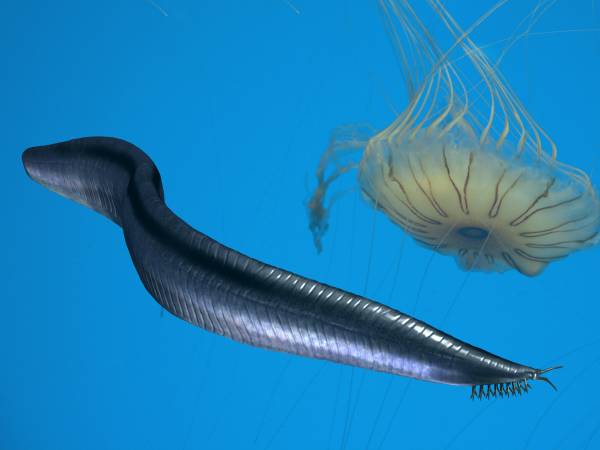Vision evolved as early as 540 million years ago during the Cambrian explosion. The ability to see, alongside the development of hearing, provided organisms with the evolutionary advantage of sensing their environment from a distance. This sensory evolution necessitated the development of larger brains for the complex processing of visual data, marking a pivotal moment in the cognitive evolution of life.
Pikaia Gracilens (520 to 505 Mya): In the ancient seas of the Middle Cambrian, starting around 520 million years ago, Pikaia gracilens swam into the annals of evolutionary history as one of the earliest known chordates, a group that would eventually give rise to vertebrates, including fish and, much later, humans. Measuring up to 6 centimeters in length, Pikaia boasted a series of notable features for its time, including a notochord—a flexible rod running along its back, which would become the backbone in its vertebrate descendants—and rudimentary structures suggesting the early development of a circulatory and nervous system. While Pikaia itself lacked well-defined eyes, its place in the evolutionary lineage hints at the beginnings of the complex sensory organs that would become eyes in later vertebrates.











